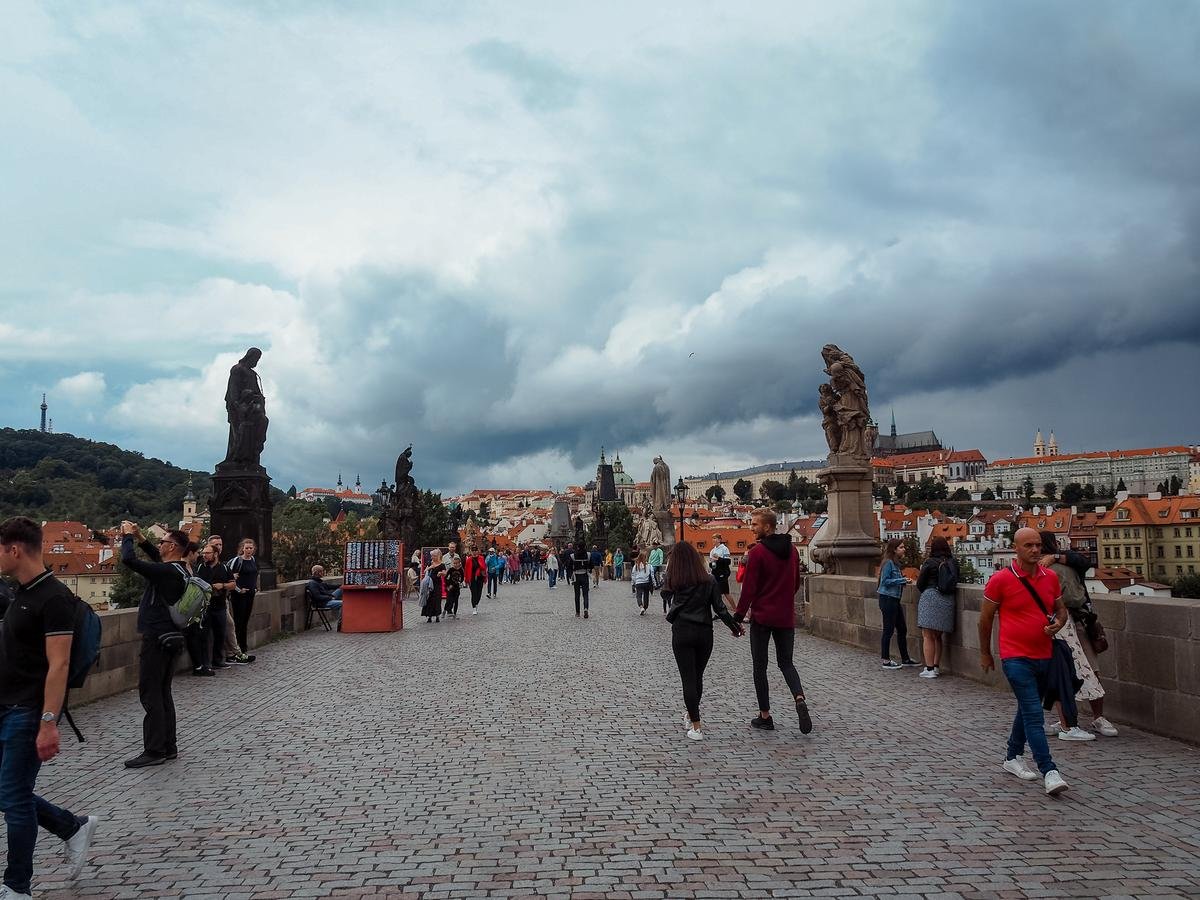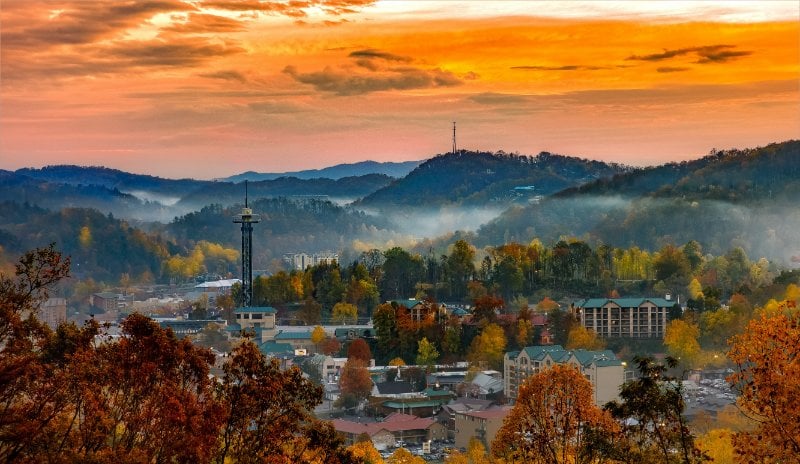While piles of uncollected garbage or pristine parks may be a little more obvious, air quality is always a reliable indicator of a city’s environmental health. A city’s air quality has far-reaching implications that extend beyond public well-being.
Poor air quality doesn’t just result in poorly people; it can also adversely affect plants and natural scenery and even damage buildings and other man-made structures.
For Europe’s historic cities, renowned for their rich cultural legacies and landmarks, the battle against air pollution is a delicate dance between the constant march of modernization, preserving heritage, and safeguarding the future.
This interplay between air quality management and cultural preservation is always evolving but ensures that significant sites are preserved for future generations.
Air Quality Challenges in European Historical Cities

At the heart of the air quality conundrum lies Johnny human. Since the Industrial Revolution starting in the mid-18th Century, a complex tapestry of pollutants, each playing a unique role in the symphony of urban smog, has plagued many European cities.
For the most part, things are a lot cleaner than they once were. Many historical industrial regions still maintain reputations for having filthy air, such as London, aka “The Big Smoke” or the “Black Country” in England’s Midlands, named for its highly polluted, smoky air.
Smoke filled with things like particulate matter, lead, carbon dioxide, carbon monoxide, sulfur dioxide, and nitrogen oxides, born from the insatiable appetites of transportation and industry, would cast a shadow over the streets of Europe’s historic industrial centers.
These invisible adversaries, though imperceptible to the naked eye, pose grave health risks, with studies and World Health Organization guidelines warning of their potential to exacerbate respiratory illnesses and cardiovascular diseases.
Yet, the challenges these historic cities face are not just a matter of pollution levels; they are intrinsically tied to the essence of their architectural grandeur. Narrow, labyrinthine streets, designed for horse-drawn carriages rather than SUVs or tour buses, create a perfect storm of congestion and stagnant air flow. Add to this an influx of tourists, and you’ve got yourself a real pickle.
And it gets worse! A lot of these noxious gases can actually harm the environment. And I’m not just talking about plants or wildlife suffering from dirty air. Smog can actually damage buildings, with a lot of historic architecture being worn down by the corrosive chemicals in the air.
See Related: Most Beautiful Towns in Europe to Visit
Innovative Solutions and Policies

Recognizing this issue, the European Union has unleashed a torrent of initiatives over the years, each one a brushstroke on the canvas of a greener, cleaner future. For example, the European Green Deal and the Zero Pollution Action Plan have set ambitious targets for air quality improvements across Europe.
Not content with broad strokes, the European Commission has delved deeper, introducing legislative measures in 2022 that specifically address the unique challenges faced by historical cities. From low-emission zones to heritage-sensitive urban planning, these policies embody innovation, tailored to preserve the delicate balance between progress and preservation.
This doesn’t even acknowledge local and city-wide green initiatives that can be found in essentially every historical town and city in Europe. These can run from anything, such as designated quiet areas to car-free zones and planning restrictions around sites of cultural or historical significance.
Case Studies: Rome, Prague, Krakow, Paris and Athens
To truly appreciate the impact of these efforts, one need only gaze upon the cities that have embraced them wholeheartedly. Here are some key examples:
Rome

The quality of air in modern day Rome has famously been of pretty poor quality. The Eternal City’s ancient patchwork of small streets makes for congested traffic, meaning more pollution.
Recent traffic restrictions in the historic center have breathed new life into the ancient streets, with the air quality improving markedly over the last three years. There are also talks to start converting vehicles to running on “cleaner” gas and introducing more electric vehicles.
Prague

Prague has long enjoyed relatively good air quality, which continues to improve. The city’s embrace of electric public transport hasn’t just painted the city in a new, eco-friendly hue but also improved the air quality to the point where it’s the second cleanest city air in the country.
Krakow

Krakow is a real success story that is also bound to keep improving. “Krakow Smog” is well known in Poland and has historically been responsible for tens of thousands of deaths due to related illnesses.
A lot of this is due to Krakow’s compact layout, which traps emissions. Measures to restrict traffic in certain “air corridors” have already made huge differences in the last decade, and there are further plans to implement electrically powered public transportation.
See Related: Warsaw vs Krakow
Paris

Paris, the “City of Light,” has illuminated the path to cleaner air with its own strategies. Once one of Europe’s industrial powerhouses, the air in Paris is among the cleanest in Europe’s capital cities.
This is largely down to fewer active industrial areas and cleaner industrial practices, but also down to bicycle culture. France has always had a big bike culture, and more and more parts of the city are seeing bike lanes implemented and no-car zones.
Athens

The cradle of Western civilization, Athens has demonstrated that even the most ancient cities can adapt to the modern challenges of air pollution. The air quality in Athens has historically been a mixed bag but has been constantly trending towards fewer pollutants.
Hampered by a dense layout, smog from industry, woodfires in winter, and congested traffic have been a problem. However, the decline in industrial activity and more modern stoves, heaters, and houses have made drastic improvements over the years. Nowadays, the largest culprits to poor air quality are dust and pollen.
See Related: Best Things To Do in Greece & Places to Visit
Impact of Improved Air Quality on Tourism
The benefits of improved air quality extend far beyond the realm of public health. They are inextricably linked to the lifeblood of these historic cities: tourism.
A quick glance at platforms like TripAdvisor will show you how much folks care about clean air, both locals and visitors alike. Correlations between air quality improvements and increases in tourist satisfaction and visits are undeniable.
Public Perception and Community Initiatives

This journey towards cleaner air is not just the result of top-down policies and government programs. For the most part, the improvements themselves have spawned from grassroots initiatives. From community monitoring programs to public consultations, local residents from cities across Europe have embraced the cause with open arms.
And every day, success stories abound, each one a testament to the power of grassroots action and how it is everyday people who change the world, not governments and laws. Neighborhoods all across Europe with community-led projects to introduce green spaces and pedestrian zones have resulted in measurable improvements in air quality.
Another initiative that is becoming more popular is having residents monitor and report local pollution levels, fostering a sense of collective responsibility and ownership.
Future Prospects for Urban Air Quality in Europe

While Europe’s historic industrial centers used to be smog factories, that’s largely a thing of the past, and the overall air quality across the continent is improving. Ongoing research and future technological innovations, from advanced air filtration systems to the widespread adoption of electric vehicles, promise to further reduce urban pollution and cement Europe’s position as a world leader in environmental stewardship.
The potential long-term benefits of sustained air quality improvements are vast and far-reaching – and maybe even world saving. Public health will undoubtedly benefit, with reduced rates of respiratory and cardiovascular diseases freeing up precious healthcare resources. Heritage conservation, too, will thrive, as the corrosive effects of air pollution are mitigated, preserving the architectural marvels that have stood the test of time.
Tourism, the lifeblood of these historic cities, will continue to flourish as visitors flock to experience the beauty and cultural richness that these urban gems have to offer without fighting for air. Not only that, many of these initiatives play a part in the larger global fight against climate change, and even talking about it promotes awareness.
And the chorus of expert opinions rings clear, whether it’s experts, tourists, or locals: cleaner air makes for a better city. The trajectory of air quality efforts in Europe’s historic cities is one of progress, resilience, and ingenuity of a continent determined to preserve its rich heritage while embracing a future of sustainable growth and making the world a cleaner, safer place.
Related Resources




